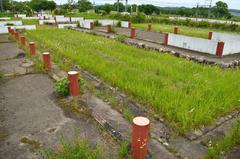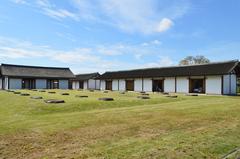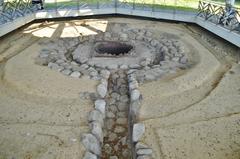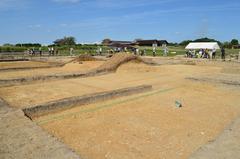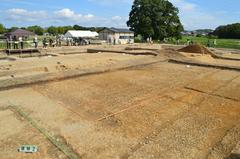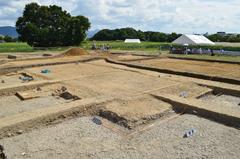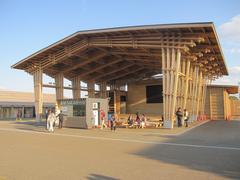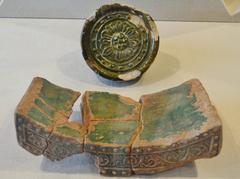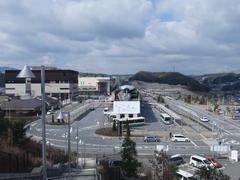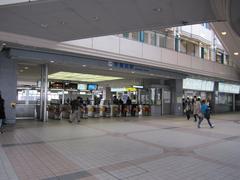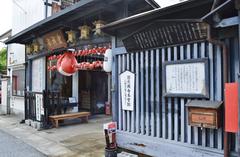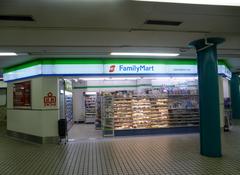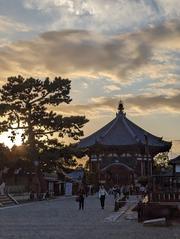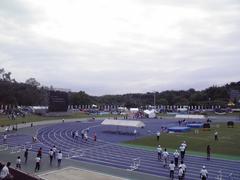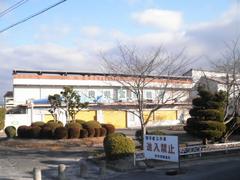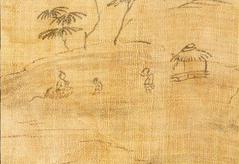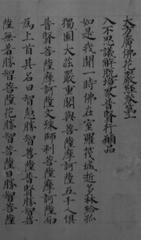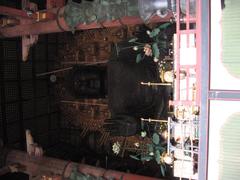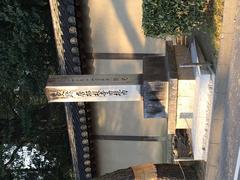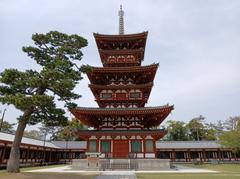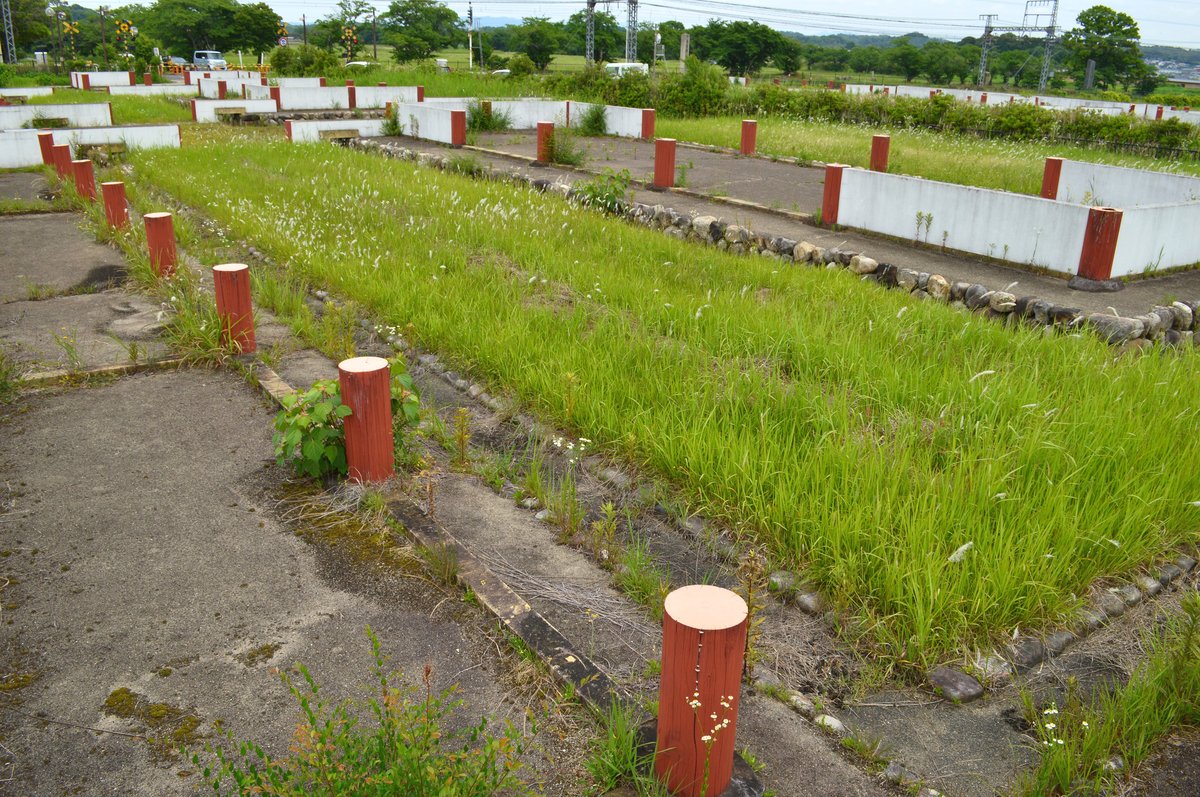
Heijo Palace Visiting Hours Tickets and Nara Historical Sites Guide
Date: 14/06/2025
Introduction to Heijo Palace and Its Historical Significance
Nestled in the historic city of Nara, Japan, Heijō Palace stands as a monumental testament to the country’s rich imperial past and cultural heritage. Serving as the imperial residence and administrative heart of Japan’s first permanent capital, Heijō-kyō, during the Nara period (710–794 CE), this UNESCO World Heritage Site invites visitors to step back in time and explore over one square kilometer of carefully preserved ruins and meticulously reconstructed buildings that echo the grandeur of an ancient era (Japan Guide; UNESCO).
Heijō Palace’s layout reflects profound Chinese architectural and urban planning influences, modeled after the Tang dynasty capital Chang’an, and it played a pivotal role in the political, cultural, and religious developments of early Japan (Japan Experience). Visitors today can immerse themselves in the palace’s historical atmosphere through extensive grounds, reconstructed landmarks such as the Daigokuden (Imperial Audience Hall), and on-site museums showcasing archaeological discoveries (Japan Travel; Visit Nara).
This comprehensive visitor’s guide provides essential information on Heijō Palace’s visiting hours, ticketing, accessibility, and practical travel tips. It further highlights key attractions, cultural events, and nearby historical sites to help travelers fully appreciate the significance and splendor of Nara’s ancient capital (Nara Palace Site Museum; washokuclub.com). Whether you are a history enthusiast, cultural explorer, or casual visitor, this guide equips you with the knowledge to plan an enriching and memorable visit to one of Japan’s most treasured historical landmarks.
Contents Overview
- Introduction
- Origins and Historical Development of Heijō Palace
- Political and Cultural Significance During the Nara Period
- Architectural Features and Layout
- Visiting Heijō Palace: Hours, Tickets, and Accessibility
- Travel Tips and Visitor Recommendations
- Nearby Attractions and Suggested Itineraries
- Modern Reconstructions and Cultural Revival
- Heijō Palace’s Role in Contemporary Japanese Identity
- Archaeological and Educational Importance
- Visuals and Interactive Elements
- FAQ
- Conclusion and Call to Action
Introduction
Welcome to Heijō Palace, one of Japan’s most significant historical sites located in the heart of Nara. As the former imperial residence and administrative center during the Nara period (710–794 CE), Heijō Palace offers visitors a unique glimpse into Japan’s ancient capital and rich cultural heritage. This comprehensive guide covers everything you need to know about visiting Heijō Palace, including visiting hours, ticket information, accessibility, and tips to make the most of your trip, along with its fascinating history and cultural importance.
Origins and Historical Development of Heijō Palace
Heijō Palace (平城宮, Heijō-kyū) was established in 710 CE as the imperial residence and administrative center of Heijō-kyō, Japan’s first permanent capital, marking the beginning of the Nara period (Japan Guide; UNESCO). The city’s layout was inspired by the Chinese Tang dynasty capital Chang’an, reflecting strong continental influences. The palace complex covered approximately one square kilometer, positioned at the city’s north-central end, following Chinese geomantic principles (Japan Experience).
The palace consisted of the daidairi (大内裏), a large walled enclosure containing ceremonial and administrative buildings, and the Inner Palace, where the emperor and imperial family resided (Wikipedia). Serving as the political and cultural heart of Japan for over 70 years, Heijō Palace was the stage for important ceremonies and government operations until the capital moved to Nagaoka in 784 and then Kyoto in 794 (Japan Guide).
Political and Cultural Significance During the Nara Period
Heijō Palace symbolized Japan’s centralized government and cultural blossoming. The Nara period saw the codification of laws, the rise of Buddhism, and artistic achievements (Japan Experience). The palace hosted imperial edicts, court ceremonies, and welcomed foreign envoys from China, Korea, and India, fostering cultural exchange (Lala Love Nippon).
Literary works such as the Kojiki, Nihon Shoki, and Manyōshū were compiled during this era, with the palace as a center for cultural preservation and production (Japan Experience).
Architectural Features and Layout
Heijō Palace’s architecture showcased early Asian capital planning. The Suzaku Gate, the main southern entrance, led to the palace’s central axis. The Daigokuden (大極殿, Former Audience Hall) was the main ceremonial building, reconstructed in 2010 to commemorate Nara’s 1300th anniversary (Japan Guide; Japan Travel).
Other highlights include the East Palace Garden, administrative offices, and residential quarters. The site is a UNESCO World Heritage Site, celebrated for its authenticity and ongoing archaeological research (UNESCO).
Visiting Heijō Palace: Hours, Tickets, and Accessibility
Visiting Hours: Heijō Palace is generally open daily from 9:00 AM to 5:00 PM (last entry at 4:30 PM). Hours may vary seasonally, with extended hours during special events or festivals. It is best to check the official Nara Palace Site Museum website before your visit.
Ticket Information: Admission to the palace grounds is free, but entry to some reconstructed buildings and exhibition halls, such as the Nara Palace Site Museum and Excavation Site Exhibition Hall, may require a ticket (approximately 300-500 yen). Tickets can be purchased onsite or online via official portals.
Accessibility: The site offers wheelchair access across the main visitor areas, with paved paths and accessible restrooms. Assistance services are available upon request; visitors are encouraged to inquire ahead for specific needs.
Travel Tips and Visitor Recommendations
- Best Time to Visit: Spring (March to May) and autumn (September to November) offer pleasant weather and beautiful seasonal scenery.
- Recommended Duration: Allocate 2-3 hours to explore the palace grounds, museum exhibitions, and nearby attractions.
- Guided Tours: Guided tours are available in multiple languages and provide insightful context. Booking in advance is recommended.
- Photography: The palace offers numerous picturesque spots, especially around the Daigokuden and East Palace Garden. Photography is permitted, but drone use is restricted.
Nearby Attractions and Suggested Itineraries
Combine your visit to Heijō Palace with other Nara historical sites such as Todai-ji Temple, Kasuga Taisha Shrine, and the Nara National Museum. Many visitors enjoy a full-day itinerary exploring these UNESCO World Heritage sites (Japan Guide).
Modern Reconstructions and Cultural Revival
Recent government-led reconstruction projects, including the Daigokuden and Suzaku Gate, rely on archaeological evidence to ensure authenticity (UNESCO). The site features the Nara Palace Site Museum, displaying artifacts and excavation findings, enriching visitors’ understanding of Nara period life (Japan Travel).
Heijō Palace’s Role in Contemporary Japanese Identity
Heijō Palace remains a powerful symbol of Japan’s ancient heritage. Events like the 2010 Heijo Relocation 1300 Year Festival celebrate its cultural legacy through exhibitions and performances (Wikipedia). Its UNESCO World Heritage status reinforces its global cultural significance.
Archaeological and Educational Importance
The Nara National Research Institute for Cultural Properties (NABUNKEN) leads ongoing archaeological excavations, providing insights into urban planning and daily life in the Nara period (Nara Palace Site Museum). Museums on site offer interactive exhibits and reconstructions to engage visitors of all ages.
Visuals and Interactive Elements
Visitors are encouraged to explore high-quality images and virtual tours available on the official Nara Palace Site Museum website. Suggested visuals include:
- Panoramic views of the Daigokuden reconstructed hall (alt: “Reconstructed Daigokuden Hall at Heijō Palace”)
- Aerial maps of the palace layout (alt: “Aerial view map of Heijō Palace complex”)
- Museum exhibits showcasing excavated artifacts (alt: “Artifacts from Heijō Palace excavation displayed in museum”)
Including these multimedia resources enhances the visitor experience and accessibility.
FAQ
Q: What are the Heijō Palace opening hours? A: The palace grounds are generally open from 9:00 AM to 5:00 PM daily, but hours may vary seasonally or during special events.
Q: How do I buy tickets for Heijō Palace? A: Admission to the grounds is free, while tickets for museums and reconstructed buildings can be purchased onsite or online.
Q: Is Heijō Palace accessible for wheelchair users? A: Yes, the main visitor areas have wheelchair-accessible paths and facilities.
Q: What is the best time to visit Heijō Palace? A: Spring and autumn offer the best weather and scenery, but the palace is enjoyable year-round.
Q: Are guided tours available? A: Yes, guided tours are offered in various languages, and booking in advance is recommended.
Conclusion and Call to Action
Heijō Palace is a must-visit destination for anyone interested in Japan’s ancient history and culture. Whether you are a history enthusiast, student, or traveler, the palace offers a rich experience blending archaeological discovery, cultural heritage, and stunning architecture. Plan your visit today by checking updated visiting hours and ticket options, and don’t miss the chance to explore nearby Nara historical sites.
Stay connected for the latest updates and events by following official social media channels, downloading the Nara tourism app, and exploring related articles on Nara’s ancient capitals and cultural treasures on our website.
For more information and to plan your visit, see:
Introduction
Discover the grandeur of Heijō Palace, the imperial residence and administrative center of ancient Japan’s first permanent capital, Heijō-kyō (now Nara). This comprehensive guide covers everything you need to know about visiting this UNESCO World Heritage Site, including Heijō Palace visiting hours, ticketing information, main attractions, and tips to enhance your experience at one of Japan’s most significant historical sites.
Palace Grounds and Layout
Heijō Palace occupies approximately 120 hectares in northern Nara (Nara City Tourism Association). Designed using Chinese-influenced city planning from the Nara period (710–794 CE), the palace grounds feature a rectangular grid layout surrounded originally by earthworks and moats with 12 gates—three on each side. It was the seat of government, housing the emperor, imperial family, and central bureaucracy comprising eight ministries and around 100 agencies.
Visitors today can explore expansive open fields, reconstructed buildings, and archaeological remains that vividly evoke the palace’s historical importance. The site forms part of the Nara Palace Site Historical Park, easily accessible from Kintetsu Saidaiji and Shin-Omiya stations (Wanderlog).
Main Attractions and Reconstructed Structures
First Daigokuden (Imperial Audience Hall)
Completed in 2010, the First Daigokuden is the iconic reconstructed Imperial Audience Hall where important state ceremonies and official functions took place. Featuring striking red pillars, white walls, and a sweeping tiled roof, it exemplifies Nara period architecture. Exhibits inside explain its historical role, construction techniques, and imperial governance.
Daigoku Gate (Southern Gate)
Opened to the public in March 2022, the Daigoku Gate serves as the main entrance to the First Daigokuden Compound. Its faithful reconstruction includes robust wooden beams, intricate joinery, and traditional tiled roofing. It marks the ceremonial approach to the audience hall and is a popular photo spot.
Suzakumon (Suzaku Gate)
The main southern gate of the palace, Suzakumon was used for dignitaries and official processions. Its vibrant vermilion color and imposing scale represent Nara period aesthetics and serve as a backdrop for festivals and reenactments.
Chōdō-in (State Halls Compound)
Once the administrative heart for government affairs, much of Chōdō-in remains as archaeological foundations, with partial reconstructions and interpretive signage allowing visitors to imagine the court’s bustling activity.
Tōin Garden
Partially restored, this elegant garden on the eastern side of the palace grounds features ponds, bridges, and carefully arranged plants, reflecting aristocratic leisure pursuits such as banquets and poetry gatherings.
Dairi (Imperial Residence)
The emperor’s private residence site is marked and interpreted with archaeological remains and reconstructions, offering insights into imperial daily life.
Museums and Interpretation Centers
Heijokyo Izanaikan Museum
Explore interactive exhibits, models, and artifacts that illuminate Heijō Palace’s history, archaeology, and Nara period culture.
Reconstruction Project Information Center
Learn about the intricate architectural methods and archaeological discoveries through theater screenings, models, and hands-on displays detailing ongoing reconstruction efforts.
Archaeological Sites and Ruins
The palace grounds contain preserved foundations of ancient buildings with multilingual signage. Walking paths guide visitors to original locations of government offices, storehouses, and ceremonial halls, illustrating the Nara period capital’s scale and ambition.
Seasonal Events and Cultural Experiences
- Heijō Palace Festival (Heijō-kyō Tenpyō-sai): Spring and autumn festivals featuring historical reenactments, traditional music, dance, and local food.
- Illuminations: Nighttime light displays at certain times of the year for magical photo opportunities.
- Cultural Workshops: Hands-on activities like calligraphy, kimono dressing, and traditional crafts.
Visitor Facilities and Accessibility
- Visitor Centers: Maps, brochures, and multilingual support.
- Rest Areas and Cafés: For relaxation and refreshments.
- Bicycle Rentals: To explore the large grounds comfortably.
- Barrier-Free Access: Wheelchair-accessible paths and restrooms.
- Guided Tours: Available in Japanese and occasionally English.
Heijō Palace Visiting Hours and Ticket Information
- Visiting Hours: The park is generally open year-round. Reconstructed buildings and museums typically operate from 9:00 AM to 4:30 PM. Hours may vary seasonally or during special events.
- Admission: Entry to the palace grounds is free. Certain museums and special exhibitions may charge a modest fee.
- Seasonal Variations: Some sites or events may have adjusted hours during peak festival seasons or holidays.
Practical Tips for Visitors
- Wear comfortable walking shoes and bring sun protection and water due to the extensive grounds.
- Cameras are encouraged; however, drones are not permitted.
- The best times to visit are spring (March–May) and autumn (September–November) for pleasant weather and vibrant events.
- Access via Kintetsu Saidaiji Station or Shin-Omiya Station, both within walking distance; buses and taxis are also available.
- Combine your visit with nearby Nara attractions such as Tōdai-ji Temple, Kasuga Taisha Shrine, and Nara Park (Wanderlog).
Notable Features and Photo Opportunities
- Panoramic views of open fields and reconstructed buildings, especially beautiful at sunrise and sunset.
- Architectural details including vibrant colors, intricate woodwork, and tiled roofs ideal for photography.
- Seasonal flowers, birds, and occasional deer from nearby Nara Park add natural charm.
Frequently Asked Questions (FAQ)
Q: What are the Heijō Palace visiting hours? A: The palace grounds are open year-round. Reconstructed buildings and museums are generally open from 9:00 AM to 4:30 PM, though hours may vary seasonally.
Q: Are there entrance fees or Heijō Palace tickets required? A: Entry to the palace grounds is free. Some museums and special exhibitions may require a small admission fee.
Q: Is Heijō Palace accessible for wheelchair users? A: Yes, many paths and buildings offer barrier-free access, including accessible restrooms.
Q: When is the best time to visit Heijō Palace? A: Spring (March–May) and autumn (September–November) provide the most pleasant weather and coincide with seasonal events.
Q: How do I get to Heijō Palace from Nara city center? A: The site is within walking distance from Kintetsu Saidaiji and Shin-Omiya stations. Buses and taxis are also options.
Plan Your Visit and Stay Connected
For the latest updates on Heijō Palace visiting hours, tickets, and events, download the Audiala app for real-time information and navigation assistance. Explore related posts on Nara historical sites and follow us on social media for exclusive content and travel tips.
Visuals and Virtual Tours
Enhance your visit by viewing high-quality images and virtual tours available on the official Nara Palace Site Historical Park website. These resources include detailed maps and photo galleries tagged with “Heijō Palace visiting hours” and “Nara historical sites” to help plan your trip.
Internal Links for Further Reading
For more detailed maps, event schedules, and visitor information, please visit the official Nara Palace Site Historical Park website.
Heijō Palace Visiting Hours, Tickets, and Guide to Nara Historical Sites: Your Complete Visitor Experience
Introduction
Discover the rich history and serene beauty of Heijō Palace, a premier Nara historical site and former imperial residence. This expansive open-air park offers visitors an immersive journey into Japan’s ancient capital era, featuring reconstructed buildings, archaeological foundations, museums, and seasonal events. Whether you’re planning your visit or curious about what to expect, this comprehensive guide covers everything from Heijō Palace visiting hours and ticket information to tips for navigating the site and enjoying its vibrant festivals.
Navigating the Heijō Palace Site: Layout, Access, and Facilities
Site Layout and Key Features
Heijō Palace, the heart of ancient Nara, is an expansive open-air historical park covering approximately 1 square kilometer (Japan365days). The grounds are largely open, with reconstructed buildings and marked foundations indicating the original palace layout. The site is organized along a north-south axis, reflecting the symmetrical grid inspired by the Tang Chinese capital of Xi’an (Happy Jappy).
Key reconstructed structures include:
- Suzaku Gate (Suzakumon): The grand southern entrance, historically used to welcome foreign dignitaries (Visit Nara).
- Imperial Audience Hall (Daigokuden): The largest building, reconstructed in 2010, where the emperor held court and major ceremonies (Japan365days).
- East Palace Garden (Toin Teien): A tranquil, symmetrical garden with a pond and banquet hall, used for imperial family gatherings (Japan Experience).
- Nara Palace Site Museum and Heijō-kyo Museum: Exhibiting archaeological finds, models, and period artifacts (Happy Jappy).
The site also features open grassy plains, wetlands, and walking paths, making it both a historical and natural attraction (Happy Jappy).
Getting There and On-Site Navigation
Access by Public Transport:
- Train: The closest station is Kintetsu Yamato-Saidaiji Station, about a 15–20 minute walk east to the palace site (Happy Jappy). JR Nara Station is also accessible, with a 15-minute bike ride or a short bus journey.
- Bus: The nearest stop is “Suzakumonhirobazen,” about 200 meters from Suzaku Gate. Buses 160 and 161 connect to major Nara stations (Cestee).
Site Navigation:
- The grounds are flat and spacious, suitable for walking and cycling. Wheelchair and stroller access is available for reconstructed buildings (Visit Nara).
- Free site maps and QR codes for the “Nara Heijokyo Historic Walk” app provide audio commentary and historical context (Visit Nara).
Heijō Palace Visiting Hours and Tickets
- Opening Hours: The park is open 24/7; however, reconstructed buildings and museums are generally open from 9:00 to 16:30 (last admission 16:00). The site is closed on Mondays (or Tuesday if Monday is a public holiday) and during the year-end/New Year holidays (Visit Nara).
- Admission and Tickets: Entry to the grounds and main reconstructed buildings is free (Cestee). No tickets are required for general access, making it an accessible destination for all visitors. Special exhibitions or events may have separate ticketing, so check the official website before your visit.
Visitor Amenities and Practical Information
- Facilities: Restrooms, vending machines, and shaded rest areas are available throughout the site. The museums provide English explanations and accessible facilities (Visit Nara).
- Accessibility: The site is largely barrier-free, with ramps and accessible toilets in key areas (Visit Nara).
- Guided Tours: Occasional guided tours are offered, and the audio app enhances self-guided exploration (Visit Nara).
Photographic Spots and Unique Features
- Suzaku Gate: Capture the grandeur of the palace’s main entrance during different lighting conditions.
- Imperial Audience Hall: The reconstructed hall’s impressive scale and traditional architecture provide stunning photo opportunities.
- East Palace Garden: Picturesque garden scenes with reflections in the pond, especially beautiful in spring and autumn.
- Open Plains and Wetlands: Seasonal wildflowers, birdlife, and expansive views offer natural photography subjects (Happy Jappy).
Visitor Experience: What to Expect
Atmosphere and Activities
Heijō Palace offers a unique blend of historical immersion and tranquil parkland. Visitors can:
- Walk through history: Enter via the Suzaku Gate, retracing the steps of ancient dignitaries, and proceed to the Daigokuden, where the emperor’s throne is displayed (Visit Nara).
- Explore reconstructed and original features: While most buildings are reconstructions based on archaeological evidence, foundations of original structures are clearly marked, offering insight into the palace’s scale (Japan Experience).
- Enjoy open spaces: The vast lawns and wetlands attract birdlife and seasonal wildflowers, making the site popular for picnics and leisurely strolls (Happy Jappy).
- Interactive learning: The museums and the Nara Heijokyo Historic Walk app provide engaging educational content, including models, artifacts, and audio guides (Visit Nara).
Visitor Demographics and Flow
- The site is less crowded than Nara Park or Tōdaiji Temple, offering a peaceful alternative for those interested in history and architecture (Cestee).
- School groups, history enthusiasts, and families are common, especially during festival periods.
Tips for a Memorable Visit
- Allow ample time: The site’s scale means a thorough visit can take 2–3 hours or more, especially if exploring museums and gardens.
- Weather considerations: The open grounds offer little shade; bring sun protection in summer and dress warmly in winter (Wanderlog).
- Combine with nearby attractions: Saidaiji Temple and other Nara World Heritage sites are within easy reach (Visit Nara).
Events and Festivals at Heijō Palace
Heijō-kyō Tenpyō Festival
The most significant annual event at Heijō Palace is the Heijō-kyō Tenpyō Festival, held each spring to celebrate Nara’s era as Japan’s capital (Japan Cheapo). This festival, with a history spanning over 1,300 years, transforms the site into a living history experience.
Festival Highlights:
- Historical Reenactments: Imperial guards, court officials, and noble processions recreate the grandeur of the Nara period.
- Noble Banquet: Demonstrations of ancient court cuisine and etiquette.
- Parades and Performances: Traditional music, dance, and street performances animate the grounds.
- Children’s Workshops: Hands-on activities introduce younger visitors to crafts and customs of the era.
- Food Stalls and Market: Local specialties and festival foods are available throughout the three-day event.
2025 Schedule: The main festival is scheduled for May 3, with related processions at Expo 2025 Osaka-Kansai on May 27–29 (Japan Cheapo).
Summer Night Festival (Tenpyō-sai Natsu)
In August, the Heijo-kyo Tenpyo-sai Natsu (Summer Night Festival) brings evening parades, traditional costumes, fireworks, light installations, live music, and food stands to the palace grounds (Japan365days). This event offers a rare opportunity to experience the site illuminated after dark.
Other Events and Seasonal Activities
- Special Exhibitions: The museums occasionally host temporary exhibitions on palace archaeology and Nara period culture (Happy Jappy).
- Nature Walks: Seasonal wildflowers and birdwatching are popular, especially in spring and autumn (Happy Jappy).
- Cultural Workshops: During festival periods, visitors can participate in calligraphy, kimono dressing, and other traditional arts (Japan Cheapo).
Planning Your Visit Around Events
- Crowds: Festivals attract larger crowds, especially during the Tenpyō Festival and summer events. Arrive early for the best experience.
- Accessibility: All major event areas are accessible, but some temporary installations may have limited access.
- Event Schedules: Dates and details can change; check the official event calendar before your visit.
Frequently Asked Questions (FAQ)
Q: What are the Heijō Palace visiting hours? A: The park is open 24/7, but reconstructed buildings and museums operate from 9:00 to 16:30, with last admission at 16:00. Closed Mondays and year-end/New Year holidays.
Q: Are there any admission fees or tickets required? A: General admission to the grounds and main buildings is free. Some special exhibitions or events may require tickets.
Q: How do I get to Heijō Palace from Nara Station? A: You can walk (about 15-20 minutes), bike, or take a bus (160 or 161) to the Suzakumonhirobazen stop near Suzaku Gate.
Q: Is Heijō Palace wheelchair accessible? A: Yes, the site is largely barrier-free with ramps and accessible toilets.
Q: When is the best time to visit? A: Spring and autumn offer mild weather and coincide with major festivals, enhancing the experience.
Q: Are guided tours available? A: Yes, occasional guided tours are offered; alternatively, use the Nara Heijokyo Historic Walk audio app for self-guided tours.
Conclusion and Call to Action
Heijō Palace stands as a captivating site blending Japan’s imperial history, cultural festivals, and serene natural beauty. With free admission, accessible facilities, and engaging events like the Heijō-kyō Tenpyō Festival, it’s a must-visit destination for history enthusiasts and families alike. Plan your visit around the palace’s opening hours and festivals for a truly immersive experience.
For enhanced exploration, download the Nara Heijokyo Historic Walk app, follow us on social media for the latest updates, and explore related posts on Nara’s historical sites to enrich your travel itinerary.
Official Website: heijo-park.jp
Contact: +81 742-32-5106 / +81 742-32-5107 (Visit Nara)
Introduction
Heijō Palace Site Historical National Park in Nara City, Japan, preserves the remains of Heijō-kyō, Japan’s first permanent capital established in the 8th century. This guide provides essential information for visitors planning to explore this significant historical site. From Heijō Palace visiting hours and ticket details to transportation, facilities, and nearby attractions, discover how to make the most of your visit to one of Japan’s premier Nara historical sites.
Location, Access, and Transportation
Heijō Palace Site Historical National Park (Heijō-kyū ato) is situated in Nara City, Nara Prefecture. The park is located on the grounds of the former imperial palace of Heijō-kyō. The address is 2-9-1 Sakicho, Nara, Nara Prefecture 630-8577.
Getting There
- By Train:
The park is conveniently reachable from Nara Station (JR or Kintetsu lines). From JR Nara Station, it’s about a 20-minute walk or a short bus ride. From Kintetsu Nara Station, it takes approximately 30 minutes on foot or 10–15 minutes by bus. - By Bus:
Local Nara Kotsu buses run frequently from both JR and Kintetsu Nara stations. Get off at the “Heijō-kyū-seki” stop, adjacent to the main entrance (washokuclub.com). - By Car:
Paid parking is available at the park’s designated lots. Parking spaces can fill quickly on weekends and holidays.
Heijō Palace Visiting Hours and Tickets
- Park Grounds:
Open year-round from sunrise to sunset with free entry. No ticket is required to roam the extensive grounds. - Museum and Reconstructed Buildings:
Facilities including the Heijō Palace Site Museum, Suzaku Gate, and Daigokuden Hall are open from 9:00 AM to 4:30 PM (last admission at 4:00 PM). Hours may change during special events or holidays. - Admission Fees:
Entry to both the park grounds and reconstructed buildings is free, making Heijō Palace an accessible highlight among Nara historical sites (heijo-park.jp).
Facilities and Visitor Services
Visitor Centers and Information
- Heijō Palace Site Museum:
Features comprehensive exhibits on the site’s history, archaeology, and reconstruction. English-language materials and signage are provided. - Information Desks:
Multilingual staff offer maps, brochures, and visitor guidance. - Rest Areas:
Benches and shaded pavilions are available across the park.
Accessibility
- Paths:
Wide, flat walking paths accommodate wheelchairs and strollers. - Wheelchair Rental:
Available at the main entrance and visitor center. - Accessible Restrooms:
Modern, barrier-free toilets are located near major attractions.
Food and Drink
- Cafés and Vending Machines:
Light refreshments and drinks can be found at on-site cafés and vending machines. - Nearby Restaurants:
Within a 10–15 minute walk, enjoy local specialties like kakinoha-zushi (persimmon leaf sushi) and miwa somen (washokuclub.com).
Souvenirs and Shops
- Gift Shops:
Sell books, traditional crafts, and exclusive Heijō Palace-themed souvenirs. - Local Products:
Look for Nara’s famous deerskin goods and regional snacks.
Recommended Visiting Time and Best Seasons
- Suggested Duration:
Spend at least 2–3 hours exploring the main buildings, museum, and grounds. History enthusiasts may wish to allocate half a day or more. - Best Seasons:
- Spring (late March–May): Enjoy cherry blossoms and mild weather.
- Autumn (October–November): Experience colorful foliage and pleasant temperatures.
- Summer: Hot and humid; bring sun protection and water.
- Winter: Quiet with occasional snow creating picturesque views (washokuclub.com).
Rules, Etiquette, and Safety
- Respectful Behavior:
Maintain quiet, avoid littering, and respect historical structures and local customs (heijo-park.jp). - Photography:
Allowed in most outdoor areas and reconstructed buildings; flash and tripods may be restricted in museum spaces. - Pets:
Permitted outdoors if leashed; not allowed inside buildings. - Cycling:
Bicycles permitted only on designated paths.
Events and Special Activities
- Seasonal Festivals:
Heijō Palace Festival in spring and autumn features traditional performances, food stalls, and historical reenactments. - Workshops and Guided Tours:
Occasional workshops on ancient crafts and guided tours (primarily in Japanese, sometimes English) are available. Check the official website for schedules.
Nearby Attractions
- Yakushi-ji Temple:
A UNESCO World Heritage site famous for its East Pagoda and Buddhist art, a short bus ride away (washokuclub.com). - Nara Park:
Known for free-roaming sacred deer and proximity to Todai-ji Temple and Kasuga Taisha Shrine. - Naramachi:
Historic merchant district with preserved machiya houses, shops, and cafés. - Isuien Garden and Neiraku Museum:
Tranquil Japanese garden and museum ideal for a peaceful break.
Practical Tips for a Memorable Visit
- Footwear:
Wear comfortable shoes; the site is extensive and involves significant walking. - Weather Preparedness:
Bring sun protection in summer and warm layers in winter. - Language:
English signage is available, but staff English proficiency varies; a translation app is recommended. - Cash and Payments:
Many facilities accept cash only; bring sufficient yen for purchases. - Luggage Storage:
Coin lockers are available at nearby train stations, but not inside the park.
Frequently Asked Questions (FAQ)
Q: Are tickets required to enter Heijō Palace?
A: No, entry to the park and reconstructed buildings is free of charge.
Q: What are the Heijō Palace visiting hours?
A: The park grounds are open from sunrise to sunset. Museum and reconstructed buildings are open 9:00 AM to 4:30 PM (last entry 4:00 PM).
Q: Are guided tours available?
A: Yes, guided tours are offered occasionally, mainly in Japanese, with some English tours. Check the official website for schedules.
Q: Is the park wheelchair accessible?
A: Yes, with flat paths, wheelchair rentals, and accessible restrooms available.
Q: Can I take photographs?
A: Photography is allowed outdoors and in reconstructed buildings; flash and tripods may be restricted indoors.
Q: Are pets allowed?
A: Pets on leashes are allowed outdoors but not inside buildings.
Visuals and Interactive Resources
For a richer experience, visitors are encouraged to view high-quality images of Heijō Palace’s reconstructed buildings and seasonal events, which are available on the official website. Interactive maps and virtual tours can also be accessed online to plan your visit effectively.
Internal and External Links
Contact Information
- Official Website:
heijo-park.jp/en/information/ - Telephone:
+81-742-36-8780 (Nara Palace Site Historical Park Office)
Accommodation and Dining Nearby
- Hotels:
Central Nara offers a variety of hotels and traditional ryokan, from budget-friendly stays to luxury accommodations. - Dining:
Sample local cuisine including vegetarian Buddhist dishes and regional sweets at nearby restaurants (washokuclub.com).
Visitor Conduct and Local Customs
Visitors are encouraged to show cultural sensitivity and respect the tranquil atmosphere of this historically significant site. Sharing the space harmoniously with locals who use the park for daily recreation enhances everyone’s experience (heijo-park.jp).
Conclusion and Call to Action
Planning your visit to Heijō Palace Site Historical National Park is now easier with this comprehensive guide on Heijō Palace visiting hours, tickets, and key information about Nara historical sites. Experience the rich heritage, beautiful landscapes, and cultural events firsthand. For ongoing updates, download the Audiala app, explore our related posts, and follow us on social media to stay informed about Heijō Palace and other attractions in Nara. Start your historical journey today!
Summary and Visitor Recommendations
Heijō Palace remains a cornerstone of Japan’s cultural and historical identity, offering visitors a unique window into the nation’s imperial origins and Nara period grandeur. With free access to expansive palace grounds complemented by reconstructed architectural masterpieces and informative museums, the site caters to diverse interests—ranging from archaeology and history to architecture and cultural festivals (Japan Guide; Visit Nara).
The palace’s well-preserved layout and regular cultural events, such as the Heijō-kyō Tenpyō Festival, enliven the site with traditional music, dance, and historical reenactments, making it a vibrant destination year-round (Japan Cheapo). Accessibility features and visitor amenities ensure a comfortable experience for all, while nearby attractions like Todai-ji Temple and Kasuga Taisha Shrine enrich any itinerary in Nara (Wanderlog).
To fully engage with this historic treasure, visitors are encouraged to utilize resources such as guided tours, the Nara Heijokyo Historic Walk audio app, and virtual tours available on official websites. Staying informed through official channels and planning visits during favorable seasons or festivals enhances the overall experience. Begin your journey into Japan’s ancient capital today, and discover the enduring legacy of Heijō Palace in the heart of Nara (Nara Palace Site Museum; heijo-park.jp).
Sources and Further Reading
- Heijō Palace Visiting Hours, Tickets, and Historical Guide to Nara’s Ancient Capital, 2024, Japan Guide https://www.japan-guide.com/e/e4111.html
- UNESCO World Heritage Centre: Heijō Palace, 2024 https://whc.unesco.org/en/list/870
- Japan Experience: Nara Period History and Heijō Palace, 2024 https://www.japan-experience.com/plan-your-trip/to-know/japanese-history/nara-period
- Japan Travel: Heijō Palace, 2024 https://www.japan.travel/en/spot/998/
- Nara Palace Site Museum Official Website, 2024 https://www.nabunken.go.jp/heijo/museum/english/about.html
- Visit Nara: Heijō Palace Information, 2024 https://www.visitnara.jp/venues/A00497/
- Washoku Club: How to Explore Nara in Japan 2025, 2025 https://washokuclub.com/how-to-explore-nara-in-japan-2025-a-complete-guide/
- Japan Cheapo: Heijō-kyō Tenpyō Festival, 2024 https://japancheapo.com/events/heijokyo-tempyo-sai-festival/
- Wanderlog: Heijō Palace Site Historical National Park, 2024 https://wanderlog.com/place/details/21807/heij%C5%8D-palace-site-historical-national-park
